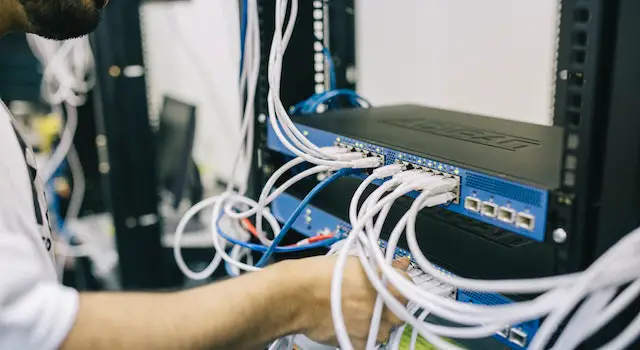How To Fix The Orange Light On An Ethernet Port?
A light of orange on an ethernet port typically indicates an Internet connectivity issue. Various reasons, like poor cable connections, malfunctioning equipment, or issues with network configuration could cause it. If you want to fix the light that is orange on the ethernet port, begin by checking the connections of your cable to make sure that they’re safe and securely connected at both ends.
If the connections to the cable are in order, test resetting your device, like a router or switch, to see if it solves the problem. If the light remains orange, it is possible that you have to replace the Ethernet cable or switch to an alternative port on your network gadget to determine if this can help.
If none of the steps are successful, the issue may lie related to the hardware. In this instance, you might need to contact your manufacturer or certified tech for assistance. It is important to remember that solving network problems isn’t easy and could require some technical understanding. Always get help if you’re uncertain about the best way to tackle your issue or deal with more complex configurations for your network.
What Does An Orange Light Mean, Ethernet?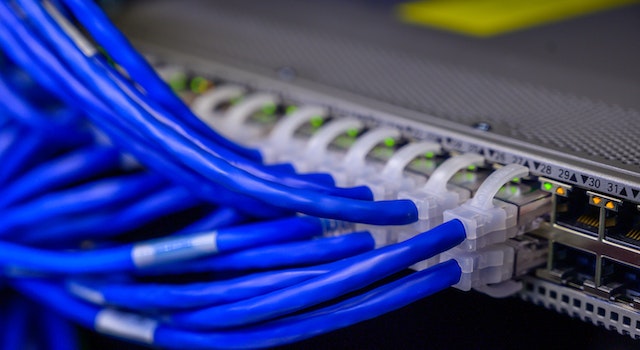
The orange light at an Ethernet port could indicate various things based on context. Here can be some explanations:
Link Speed Negotiation
If you plug in an Ethernet cable connected to connected ports, the two devices at opposite ends must negotiate the rate at which they communicate. This negotiation process can take several seconds, in which the port could be illuminated with an orange light. When the negotiation is completed, the light turns green to signal an effective link. However, if the light stays red or does not turn completely off, that could indicate an issue in the connection, port, or device on the other side.
Half-duplex Mode
Ethernet devices can be used in half-duplex or full-duplex mode. In half-duplex mode, each device can transmit or receive data but not simultaneously. This could result in slow communication and collisions. Certain Ethernet devices show an orange light to show that they operate using a half-duplex. To enable full-duplex mode, both devices at either end should support it and configure it.
VLAN Tagging
In certain network configurations, Ethernet packets are tagged with the VLAN (virtual local area network) identifier to differentiate the traffic. Certain Ethernet ports might show orange lights when receiving packets with a VLAN identifier. This isn’t necessarily an indicator of a problem. It’s more of a function of the configuration of the network.
Link Status
The last thing to note is that the orange light on the Ethernet port could mean the connection is active, but no data is being sent. For example, it could happen when the device on the other side isn’t transmitting any data, or there is an interruption to communication for a short period. If the light remains bright orange for a prolonged duration, then it could be worthwhile to check the configuration of your network or try to fix the issue.
Why Is My Ethernet Light Orange Instead Of Green?
When you check the Ethernet ports, you might be able to see that the light that normally appears green has now turned orange. This could be confusing, and you might wonder if something is wrong with your network.
What Does The Ethernet Light Mean?
Before we go into why your Ethernet light may be turning orange rather than green, we’ll first look at how to interpret what the Ethernet light actually indicates.
If you are sure your Ethernet port is working properly, The port’s light should be green. This green light means it is a functioning link between your computer and router or switches.
If the light turns, orange is usually a sign that there’s a problem in connection and your device isn’t capable of establishing the network connection.
Reasons Why Your Ethernet Light Might Be Orange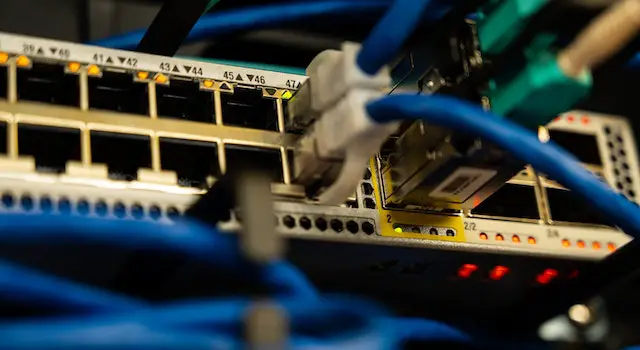
There are various reasons that your Ethernet light could be glowing colored orange rather than green. The most frequent causes are:
-
Cable Connection Issues
One of the main reasons the Ethernet light may be red is problems with the cable connection. If the Ethernet cable is not connected correctly or there is an interruption on the cable, your device might not be capable of connecting with the switch on the network or router.
To solve this issue, ensure that your Ethernet cable is connected correctly and that there aren’t cracks in your cable. If you’re still experiencing issues, consider replacing the cable completely.
-
Network Congestion
Another reason the Ethernet light turns red is the network’s congestion. If there is more than one device connecting to your network simultaneously, the router or switch might be unable to manage the traffic volume and cause connectivity problems.
To solve this issue, try disconnecting a few of your devices on the network or upgrading your device or router so that it can manage more data.
-
Outdated Network Driver
If the driver for your network is in error or isn’t working properly, the device might not be able to establish an internet connection. This could result in the Ethernet light going to orange rather than green.
To fix this issue, change or reinstall your network driver completely. It is common to find the most current drivers for your network on the manufacturer’s site.
-
IP Address Conflict
A conflict with IP addresses happens when two devices connected to the same network share an identical IP address. This can result in connection issues and cause your Ethernet light to turn orange.
To solve this issue, try to release and renew the IP addressr assigning an IP address with a static address on your computer.
-
Faulty Network Switch or Router
If none of the solutions above can be solved, the issue could be in your network switch or router. If your router or switch is not working properly, it might not be able to connect with your device. This could make you see your Ethernet light change color.
To solve this problem, Try resetting your switch router or simply replacing it.
What Does The Orange Light On The Switch Port Mean?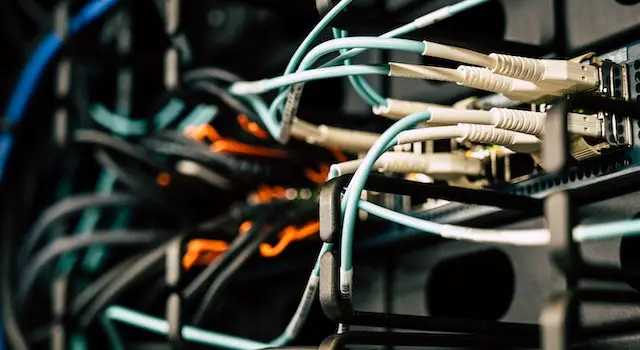
A light that is orange on a switch port could be a sign of problems that are affecting the connectivity to the Internet. When connecting devices to a switch on the network, the port’s light will be green to show that you have an active connection. If the port’s light is orange, it indicates something that needs to be resolved.
What Is A Switch Port?
Before we look at why that light at a switch port could be green, let’s look at the definition of a switch port. It is the connector point on a switch, which connects devices networks.
When a device is connected to an outlet port on a switch, the switch transmits information between and to the device via the network. The switch’s light port indicates the state that the switch is connected to the switch and the device.
Reasons Why The Light On A Switch Port Might Be Orange
There are many reasons why the light on the switch port may be green instead of orange. The most frequent reasons are:
-
Cable Connection Issues
One of the main reasons why the light on a switch’s port is due to connectivity problems. If the cable isn’t completely connected or there is any break in the wire, it might not be able to connect to the switch.
To fix this issue, be sure your cable has been connected all the way through, and there aren’t any cracks on the cable. If you’re still experiencing issues you can, you can try replacing the cable entirely.
-
Speed or Duplex Mismatch
Another reason the switch’s port may be red is the speed or duplex being out of sync. If the settings for speed or duplex of the devices and switches aren’t identical, the device might be unable to connect to the switch.
To solve this issue, check that the speed and duplex settings of the switch and device are identical. Configuring these settings on the settings for the device’s network or in the configuration menu is common.
-
Network Congestion
Network congestion can cause the port’s light to change to orange. If multiple devices are trying to connect to the network simultaneously, the switch might not be capable of handling the volume of traffic and cause connectivity problems.
To fix this problem, try disconnecting one of your devices from the network or changing your switch to one capable of handling more traffic.
-
Outdated Network Driver
A damaged or out-of-date network driver may cause the light on the switch port to change color. Likewise, if the driver for your network isn’t functioning properly and the device is not functioning properly, it might not be capable of connecting to the switch.
To fix this problem, try changing the network driver installed on your device or restarting it completely. You will typically get the most recent networking driver via the manufacturer’s website.
-
Faulty Network Switch
If none of these solutions are working, the problem could be with the switch itself. If the device is malfunctioning or malfunctioning, it might not be capable of connecting to the device, which could cause the port’s light to change color.
You can try resetting the switch or even replacing it entirely to solve this problem.
Why Is My Lan1 Light Orange?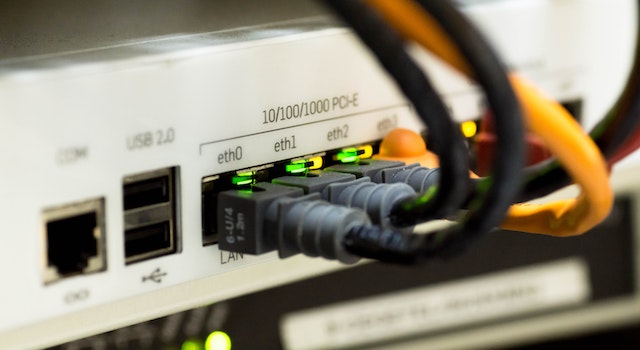
If you’re seeing an orange light on the LAN1 port, it’s most likely something wrong with the network. It’s a port in the router or switches utilized to link devices with the local area networks (LAN).
What Is A LAN Port?
Before we go into the causes of why the LAN1 indicator might turn yellow, it’s crucial to know what a port is. The LAN port, also known as a Local Area Network port, is a point of connection on your network switch or router that connects different network devices.
When a device connects to the LAN port, the device will be able to be connected to devices on that same network. The LED at the LAN port shows the state of the connectivity between the device and the switch or router.
Reasons Why Your LAN1 Light Might Be Orange
There are various reasons your LAN1 light may be turning colored orange rather than green. The most frequent causes are:
-
Cable Connection Issues
One of the main reasons your LAN1 lamp could be glowing orange is cable connection problems. If the cable isn’t completely connected or there is any break on the cable, your device cannot connect to the switch or router.
To solve this issue, be sure you have the cables connected correctly and there aren’t cracks within the cable. If you’re having problems, you can try replacing the cable entirely.
-
Network Configuration Issues
Another reason the LAN1 light is yellow is because of problems with network configuration. If your device’s IP address and network settings aren’t set correctly, it might not be capable of connecting to the switch or router.
You must ensure your device is set up using the proper IP address and network setting to solve this issue. It is possible to configure these settings through your device’s network settings or in the router’s configuration menu.
-
Network Congestion
Network congestion may also result in it to cause the LAN1 light to change to orange. This is because if more than one device tries to connect to the network simultaneously, your router might be unable to handle the load that could cause connection problems.
To fix this problem, try disconnecting a few of your devices on the network, changing your router, or switching to one that can handle more traffic.
-
Outdated Network Driver
An incompatible or obsolete network driver could cause the LAN1 indicator to turn orange. If the driver for your network isn’t functioning properly and the device is not functioning properly, it might not be able to connect to the switch or router.
To fix this issue, try changing the network driver installed on your device or reinstalling it completely. It is common to find the latest version of the network driver on the manufacturer’s official website.
-
Faulty Router or Switch
If none of the solutions above work, the problem could be in the switch or router. If the switch or router is not working properly, it might not be capable of connecting to the device, which could cause the LAN1 light to turn red.
You can try resetting the switch or router or switching it over completely to solve this problem.
FAQ’s
What does an Ethernet port’s orange light signify?
An Ethernet port’s orange light often signals a connectivity issue, such as a sluggish or interrupted connection. Many difficulties, such as cable problems, network setup problems, or device failures, may be to blame for this.
How can I solve my Ethernet port’s orange light?
Checking the cable to make sure it is firmly attached on both ends should be one of your initial steps. Try restarting your computer, modem, or router if it doesn’t fix the problem. Update your network driver software or reset your network setup if the issue doesn’t go away.
Why is the Ethernet connector on my computer orange rather than green?
An issue with the connection is often indicated by an orange light, but a functioning connection is shown by a green light. Many difficulties, such as cable issues, network configuration problems, or device failures, might result in an orange light.
How can I figure out whether the cable is the issue?
Try an alternative cable and see if the issue still exists to check if the issue is with the cable. To check if the connection is loose or broken, you may also try jiggling the wire at both ends.
How can I reset my network settings?
By navigating to your network settings and choosing “Reset network settings” or “Forget network,” you may reset your network setup. By doing this, you may reset your network settings completely and erase your current ones.
If none of the suggestions work, what should I do?
If none of the fixes work, there can be a hardware issue, such a broken Ethernet port. In this situation, you might have to swap out the Ethernet port or get help from a specialist.
How To Fix The Orange Light On An Ethernet Port?
A light of orange on an ethernet port typically indicates an Internet connectivity issue. Various reasons, like poor cable connections, malfunctioning equipment, or issues with network configuration could cause it. If you want to fix the light that is orange on the ethernet port, begin by checking the connections of your cable to make sure that they’re safe and securely connected at both ends.
If the connections to the cable are in order, test resetting your device, like a router or switch, to see if it solves the problem. If the light remains orange, it is possible that you have to replace the Ethernet cable or switch to an alternative port on your network gadget to determine if this can help.
If none of the steps are successful, the issue may lie related to the hardware. In this instance, you might need to contact your manufacturer or certified tech for assistance. It is important to remember that solving network problems isn’t easy and could require some technical understanding. Always get help if you’re uncertain about the best way to tackle your issue or deal with more complex configurations for your network.
What Does An Orange Light Mean, Ethernet?
The orange light at an Ethernet port could indicate various things based on context. Here can be some explanations:
Link Speed Negotiation
If you plug in an Ethernet cable connected to connected ports, the two devices at opposite ends must negotiate the rate at which they communicate. This negotiation process can take several seconds, in which the port could be illuminated with an orange light. When the negotiation is completed, the light turns green to signal an effective link. However, if the light stays red or does not turn completely off, that could indicate an issue in the connection, port, or device on the other side.
Half-duplex Mode
Ethernet devices can be used in half-duplex or full-duplex mode. In half-duplex mode, each device can transmit or receive data but not simultaneously. This could result in slow communication and collisions. Certain Ethernet devices show an orange light to show that they operate using a half-duplex. To enable full-duplex mode, both devices at either end should support it and configure it.
VLAN Tagging
In certain network configurations, Ethernet packets are tagged with the VLAN (virtual local area network) identifier to differentiate the traffic. Certain Ethernet ports might show orange lights when receiving packets with a VLAN identifier. This isn’t necessarily an indicator of a problem. It’s more of a function of the configuration of the network.
Link Status
The last thing to note is that the orange light on the Ethernet port could mean the connection is active, but no data is being sent. For example, it could happen when the device on the other side isn’t transmitting any data, or there is an interruption to communication for a short period. If the light remains bright orange for a prolonged duration, then it could be worthwhile to check the configuration of your network or try to fix the issue.
Why Is My Ethernet Light Orange Instead Of Green?
When you check the Ethernet ports, you might be able to see that the light that normally appears green has now turned orange. This could be confusing, and you might wonder if something is wrong with your network.
What Does The Ethernet Light Mean?
Before we go into why your Ethernet light may be turning orange rather than green, we’ll first look at how to interpret what the Ethernet light actually indicates.
If you are sure your Ethernet port is working properly, The port’s light should be green. This green light means it is a functioning link between your computer and router or switches.
If the light turns, orange is usually a sign that there’s a problem in connection and your device isn’t capable of establishing the network connection.
Reasons Why Your Ethernet Light Might Be Orange
There are various reasons that your Ethernet light could be glowing colored orange rather than green. The most frequent causes are:
-
Cable Connection Issues
One of the main reasons the Ethernet light may be red is problems with the cable connection. If the Ethernet cable is not connected correctly or there is an interruption on the cable, your device might not be capable of connecting with the switch on the network or router.
To solve this issue, ensure that your Ethernet cable is connected correctly and that there aren’t cracks in your cable. If you’re still experiencing issues, consider replacing the cable completely.
-
Network Congestion
Another reason the Ethernet light turns red is the network’s congestion. If there is more than one device connecting to your network simultaneously, the router or switch might be unable to manage the traffic volume and cause connectivity problems.
To solve this issue, try disconnecting a few of your devices on the network or upgrading your device or router so that it can manage more data.
-
Outdated Network Driver
If the driver for your network is in error or isn’t working properly, the device might not be able to establish an internet connection. This could result in the Ethernet light going to orange rather than green.
To fix this issue, change or reinstall your network driver completely. It is common to find the most current drivers for your network on the manufacturer’s site.
-
IP Address Conflict
A conflict with IP addresses happens when two devices connected to the same network share an identical IP address. This can result in connection issues and cause your Ethernet light to turn orange.
To solve this issue, try to release and renew the IP addressr assigning an IP address with a static address on your computer.
-
Faulty Network Switch or Router
If none of the solutions above can be solved, the issue could be in your network switch or router. If your router or switch is not working properly, it might not be able to connect with your device. This could make you see your Ethernet light change color.
To solve this problem, Try resetting your switch router or simply replacing it.
What Does The Orange Light On The Switch Port Mean?
A light that is orange on a switch port could be a sign of problems that are affecting the connectivity to the Internet. When connecting devices to a switch on the network, the port’s light will be green to show that you have an active connection. If the port’s light is orange, it indicates something that needs to be resolved.
What Is A Switch Port?
Before we look at why that light at a switch port could be green, let’s look at the definition of a switch port. It is the connector point on a switch, which connects devices networks.
When a device is connected to an outlet port on a switch, the switch transmits information between and to the device via the network. The switch’s light port indicates the state that the switch is connected to the switch and the device.
Reasons Why The Light On A Switch Port Might Be Orange
There are many reasons why the light on the switch port may be green instead of orange. The most frequent reasons are:
-
Cable Connection Issues
One of the main reasons why the light on a switch’s port is due to connectivity problems. If the cable isn’t completely connected or there is any break in the wire, it might not be able to connect to the switch.
To fix this issue, be sure your cable has been connected all the way through, and there aren’t any cracks on the cable. If you’re still experiencing issues you can, you can try replacing the cable entirely.
-
Speed or Duplex Mismatch
Another reason the switch’s port may be red is the speed or duplex being out of sync. If the settings for speed or duplex of the devices and switches aren’t identical, the device might be unable to connect to the switch.
To solve this issue, check that the speed and duplex settings of the switch and device are identical. Configuring these settings on the settings for the device’s network or in the configuration menu is common.
-
Network Congestion
Network congestion can cause the port’s light to change to orange. If multiple devices are trying to connect to the network simultaneously, the switch might not be capable of handling the volume of traffic and cause connectivity problems.
To fix this problem, try disconnecting one of your devices from the network or changing your switch to one capable of handling more traffic.
-
Outdated Network Driver
A damaged or out-of-date network driver may cause the light on the switch port to change color. Likewise, if the driver for your network isn’t functioning properly and the device is not functioning properly, it might not be capable of connecting to the switch.
To fix this problem, try changing the network driver installed on your device or restarting it completely. You will typically get the most recent networking driver via the manufacturer’s website.
-
Faulty Network Switch
If none of these solutions are working, the problem could be with the switch itself. If the device is malfunctioning or malfunctioning, it might not be capable of connecting to the device, which could cause the port’s light to change color.
You can try resetting the switch or even replacing it entirely to solve this problem.
Why Is My Lan1 Light Orange?
If you’re seeing an orange light on the LAN1 port, it’s most likely something wrong with the network. It’s a port in the router or switches utilized to link devices with the local area networks (LAN).
What Is A LAN Port?
Before we go into the causes of why the LAN1 indicator might turn yellow, it’s crucial to know what a port is. The LAN port, also known as a Local Area Network port, is a point of connection on your network switch or router that connects different network devices.
When a device connects to the LAN port, the device will be able to be connected to devices on that same network. The LED at the LAN port shows the state of the connectivity between the device and the switch or router.
Reasons Why Your LAN1 Light Might Be Orange
There are various reasons your LAN1 light may be turning colored orange rather than green. The most frequent causes are:
-
Cable Connection Issues
One of the main reasons your LAN1 lamp could be glowing orange is cable connection problems. If the cable isn’t completely connected or there is any break on the cable, your device cannot connect to the switch or router.
To solve this issue, be sure you have the cables connected correctly and there aren’t cracks within the cable. If you’re having problems, you can try replacing the cable entirely.
-
Network Configuration Issues
Another reason the LAN1 light is yellow is because of problems with network configuration. If your device’s IP address and network settings aren’t set correctly, it might not be capable of connecting to the switch or router.
You must ensure your device is set up using the proper IP address and network setting to solve this issue. It is possible to configure these settings through your device’s network settings or in the router’s configuration menu.
-
Network Congestion
Network congestion may also result in it to cause the LAN1 light to change to orange. This is because if more than one device tries to connect to the network simultaneously, your router might be unable to handle the load that could cause connection problems.
To fix this problem, try disconnecting a few of your devices on the network, changing your router, or switching to one that can handle more traffic.
-
Outdated Network Driver
An incompatible or obsolete network driver could cause the LAN1 indicator to turn orange. If the driver for your network isn’t functioning properly and the device is not functioning properly, it might not be able to connect to the switch or router.
To fix this issue, try changing the network driver installed on your device or reinstalling it completely. It is common to find the latest version of the network driver on the manufacturer’s official website.
-
Faulty Router or Switch
If none of the solutions above work, the problem could be in the switch or router. If the switch or router is not working properly, it might not be capable of connecting to the device, which could cause the LAN1 light to turn red.
You can try resetting the switch or router or switching it over completely to solve this problem.
FAQ’s
What does an Ethernet port’s orange light signify?
An Ethernet port’s orange light often signals a connectivity issue, such as a sluggish or interrupted connection. Many difficulties, such as cable problems, network setup problems, or device failures, may be to blame for this.
How can I solve my Ethernet port’s orange light?
Checking the cable to make sure it is firmly attached on both ends should be one of your initial steps. Try restarting your computer, modem, or router if it doesn’t fix the problem. Update your network driver software or reset your network setup if the issue doesn’t go away.
Why is the Ethernet connector on my computer orange rather than green?
An issue with the connection is often indicated by an orange light, but a functioning connection is shown by a green light. Many difficulties, such as cable issues, network configuration problems, or device failures, might result in an orange light.
How can I figure out whether the cable is the issue?
Try an alternative cable and see if the issue still exists to check if the issue is with the cable. To check if the connection is loose or broken, you may also try jiggling the wire at both ends.
How can I reset my network settings?
By navigating to your network settings and choosing “Reset network settings” or “Forget network,” you may reset your network setup. By doing this, you may reset your network settings completely and erase your current ones.
If none of the suggestions work, what should I do?
If none of the fixes work, there can be a hardware issue, such a broken Ethernet port. In this situation, you might have to swap out the Ethernet port or get help from a specialist.

